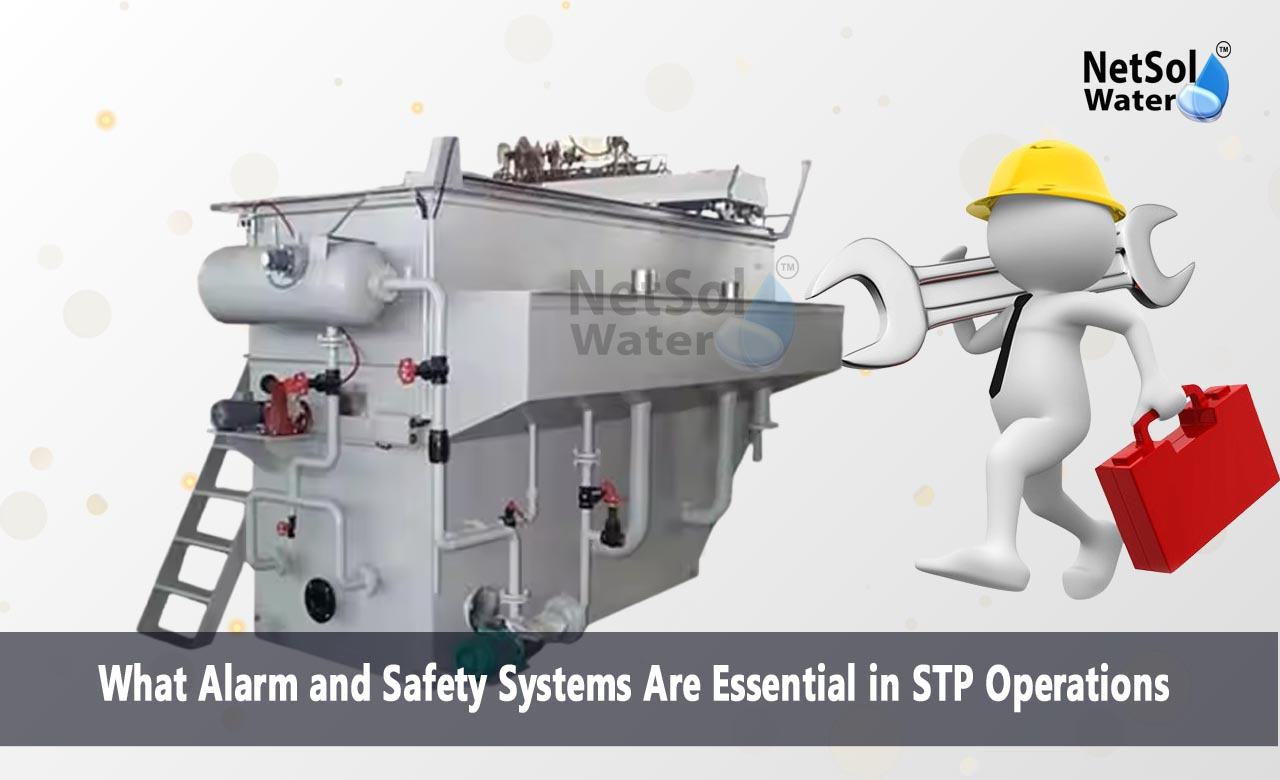What Alarm and Safety Systems Are Essential in STP Operations?
Safe operations at sewage treatment plants demand clear alerts and strong safety controls. A solid alarm and safety system helps teams spot problems early and act without delay. It protects people and equipment. It also keeps the plant running without costly stops.
We explore key alarm and safety systems for STP operations. We begin with level monitoring alarms that guard against overflows and dry runs. Next we cover pressure and flow alarms that ensure steady flow through pipes. Then we look at chemical monitoring alarms that keep water quality within safe limits. We also discuss gas detection systems that warn of toxic or flammable gases. Finally we review emergency shutdown and fire safety measures that stop hazards before they spread.
Level Monitoring Alarms
Level alarms keep tanks and basins in balance. They stop overflow or dry run in pumps. These risks can harm gear or cause spills. Let us have a look at some key alarms in this group
High Level Alarm
A high level alarm warns when water or sludge fills above a set mark. This alarm shows staff they need to cut feed or boost outlet flow. A clear alert lets teams act fast. This step stops spills and damage to plant floor and nearby areas.
Low Level Alarm
A low level alarm notifies when liquid falls below a safe mark. Pumps can run dry if managers miss a drop in level. A dry run makes seals fail and motors burn out. A low level alarm helps teams refuel or pause pumps before real harm starts.
Read: Sewage Treatment Plant Manufacturer
Pressure and Flow Alarms
Pressure and flow alarms guard pump lines and valves. They help teams spot loss of flow or too much pressure. These alarms ensure steady moves of water and sludge. Let us have a look at some key alarms in this group
Pressure Alarm
A pressure alarm shows when line pressure goes above or below a safe mark. Over pressure may burst pipes or harm valves. Low pressure can show a pump or valve has failed. A quick alarm lets the team check valves and close or open lines at once.
Flow Alarm
A flow alarm tracks the rate of liquid through pipes. A drop in flow may mean a clog or a pump fault. A surge in flow may signal a valve leak or a line cut. A flow alarm helps staff find and fix the issue fast.
Chemical Monitoring Alarms
Chemical alarms keep water quality safe for reuse or release. They track key metrics that show health of the treatment stream. Let us have a look at some key alarms in this group
pH Alarm
A pH alarm checks acidity or basicity of water. A shift in pH can harm microbes or upset the process. A pH alarm tells staff to add acid or alkali to balance the water. This keeps the process smooth and safe for discharge.
Chlorine Residual Alarm
A chlorine residual alarm tests the level of free chlorine. This step guards against bacteria in the treated water. A low residual may let bugs pass in the effluent. A high residual may hurt pipes or harm wildlife. The alarm helps tune the dose just right.
Gas Detection Systems
Gas alarms protect staff from toxic or flammable gases. Sewage plants can release gases like hydrogen sulfide or methane. Let us have a look at some key systems in this group
Hydrogen Sulfide Detection
A hydrogen sulfide detector warns of the rotten egg gas. This gas can harm lungs and harm metal over time. The detector sends a clear alert so staff can clear the area or boost airflow in time.
Methane Detection
A methane detector tracks flammable gas levels in confined areas. A high level may lead to fire or an explosion. The detector links to fans or valves to vent gas and stop risk.
Emergency Shutdown and Fire Safety
A good plan needs tools to stop systems fast and to fight fire. These link to many alarms to protect staff and gear. Let us have a look at some key systems in this group
Emergency Shutdown System
An emergency shutdown system cuts power or closes valves when alarms show a grave risk. It halts pumps and motors to stop more harm. A clear trigger map ensures the system acts without delay.
Fire Alarm System
A fire alarm system spots smoke or heat and rings bells or lights at once. It links to sprinklers or foam lines in pump rooms and chemical storage. The alarm guides staff to safe exits while fire teams reach the site.
Conclusion
Netsol Water sets the standard for alarm and safety systems in STP operations. We help clients build strong plants that run safe and smooth. You can trust our team to guide you through design and install. Reach out today to learn more about alarm and safety systems. Contact Netsol Water for a custom plan and a full plant safety review.
Contact Netsol Water at:
Phone: +91-9650608473, Email: enquiry@netsolwater.com



